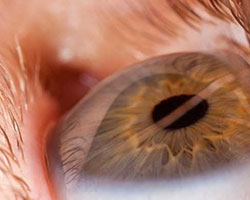
| Report Code: PP10249 | Published: April 2020 | Pages: 340 | Available format: |
| Therapeutic Area(s): | Ophthalmology | Report Type: Indication Pipeline Reports |
Overview
Retinitis pigmentosa (RP) is identified as a group of rare genetic disorders associated with the breakdown and loss of cells in the retina. The commonly occurring symptoms include loss of peripheral or central vision and affected night vision. The symptoms worsen with time and are often reported in patients aged 34 to 64 years.
The patient can be diagnosed with RP with confirmed genetic mutations. In majority of the cases, the disease is associated with a recessive gene, wherein the patient inherits the affected gene from both parents. However, X-linked dominated genes have also been reported in RP patients. On the basis of clinical impact, RP can be further categorized into syndromic, non-syndromic, and systemic. Syndromic RP and systemic RP affect other neurosensory systems, whereas non-syndromic RP does not affect other organs or tissues.
As per the current scenario, the treatment and supportive therapy indicated for RP patients are dependent on the type of RP; however, till date, there is no any standardized treatment available to address all forms of RP. This indicates that there is high unmet medical need with regard to the respective treatments. Currently, Luxturna, developed by Spark Therapeutics Inc. is the only gene therapy that is approved by the United States Food and Drug Administration (USFDA) and European Medicines Agency (EMA), for the treatment of patients with RP, associated with RPE65 gene mutation.
In addition, a number of drug manufacturers are actively involved in the development of RP therapeutics. For instance, HORA-RPE65 by HORAMA S.A. is developing in the late stage of development, and its HORA-PDE6B is in the mid-stage of development. Some other emerging therapies include AAV8-RPGR (Nightstar Therapeutics Limited), jCell (jCyte Inc.), Cenegermin (Dompé farmaceutici S.p.A.), and ReN003 (ReNeuron Group Plc).
Positive clinical trial results and adoption of collaboration strategies are enhancing RP therapeutics pipeline. Moreover, the issuance of patents helps in achieving different milestones in the form of grants and designations from regulatory bodies and institutes, including the USFDA, EMA, and National Institutes of Health (NIH), among others.
Pipeline Analysis
As of March 2020, the RP therapeutics pipeline comprised 18 pipeline drugs in different stages of development along with one marketed product.
Epidemiology Analysis
The report provides epidemiology forecast of RP for 7 major markets (7MMs) that are the U.S., Japan, and EU5 countries (the U.K., Germany, France, Italy, and Spain). It covers prevalent population and treated patient population for the period 2014–2030. Highlights of the epidemiology are as follows:
Market Analysis
The report also provides market analysis of RP therapeutics for aforementioned 7MMs. It covers market size of supportive treatments, approved treatment, that is, Luxturna, and emerging therapies that are expected to be introduced during the forecast period (2020–2030). Based on the analysis conducted, the highest revenue contributor to the RP therapeutics market was U.S. in 2019, in the 7MM. On the other hand, among the EU5 countries, Spain had the highest market share, whereas Italy had the lowest.
Competitive Landscape
Some of the key players involved in the development of RP therapeutics are Spark Therapeutics Inc., HORAMA S.A., Nightstar Therapeutics Limited, jCyte Inc., ReNeuron Group Plc, Dompé Farmaceutici S.p.A., MeiraGTx Holdings plc, Applied Genetics Technologies Corporation, Biogen Inc., and Allergan plc.
Report Insights
Some highlights of the report “Retinitis Pigmentosa Therapeutics – Pipeline Analysis, Epidemiology and Drug Forecasting” are mentioned below: